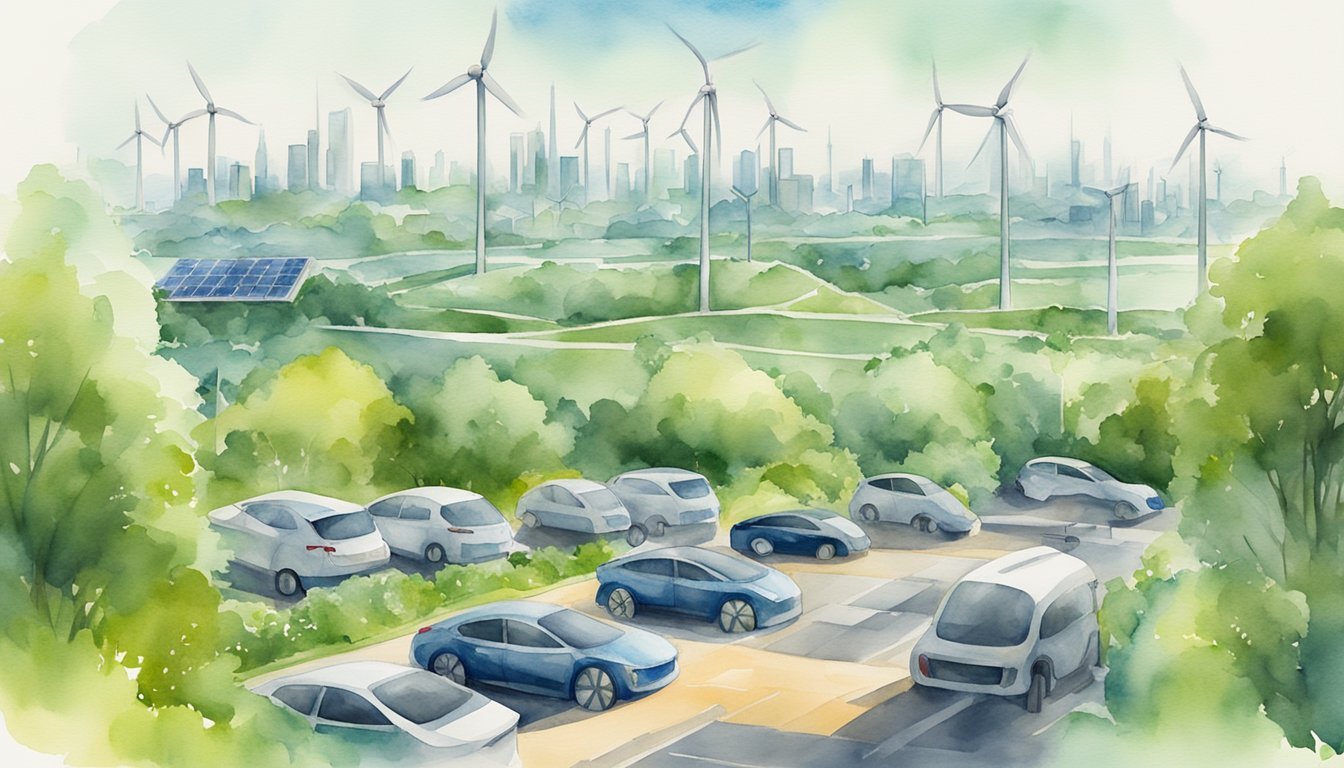Understanding Carbon Footprint
A carbon footprint encapsulates the total greenhouse gas emissions caused by an individual, organization, event, or product. It serves as a critical indicator for understanding one’s impact on climate change.
Definition and Importance
A carbon footprint is the total amount of greenhouse gases—primarily carbon dioxide, methane, and nitrous oxide—emitted directly or indirectly by a person or group. Understanding one’s carbon footprint is vital in gauging their contribution to climate change and recognizing areas where emission reductions can be targeted.
Components of Carbon Footprint
Greenhouse gas emissions, which contribute to one’s carbon footprint, include various components:
- Carbon dioxide (CO2): Produced by burning fossil fuels, deforestation, and various industrial processes.
- Methane (CH4): Emitted during the production and transport of coal, oil, and natural gas, as well as livestock farming and other agricultural practices.
- Nitrous Oxide (N2O): Released through agricultural and industrial activities, as well as during the combustion of fossil fuels and solid waste.
Measuring and Calculating
To measure and calculate a personal carbon footprint, one can use a carbon footprint calculator, which takes into account energy consumption, transportation, diet, and waste production. These calculators often convert all emissions into a carbon dioxide equivalent (CO2e) to provide a comprehensive figure representing the total greenhouse gas emissions.
Reducing Carbon Footprint

Several measures can contribute significantly to reducing an individual’s or entity’s carbon footprint, from adopting innovative technologies to supporting impactful policies.
Individual Actions
One can lower their carbon emissions through various daily practices. Transportation choices have a substantial impact; for example, opting for an electric car over one that runs on fossil fuels can reduce greenhouse gas emissions. Similarly, enhancing energy efficiency at home, such as using LED lighting and efficient appliances, contributes to climate change mitigation. Even simple actions like recycling and mindful consumption play a role in lessening an individual’s environmental impact.
Technology and Innovation
On the technological frontier, the development and deployment of renewable energy sources, like solar and wind power, are crucial for displacing reliance on fossil fuels. Companies and researchers are constantly seeking advancements in battery technology, which are foundational for the widespread adoption of electric vehicles and the effective storage of renewable energy.
Policy and Global Efforts
At the policy level, the World Resources Institute along with the Greenhouse Gas Protocol offer frameworks and standards for measuring and managing emissions. International agreements and local policies aimed at reducing carbon emissions can drive large-scale changes, accentuating the shift towards sustainable transport and the use of renewable resources. Governments around the world have committed to various initiatives stressing the importance of a collective effort in addressing climate change.

